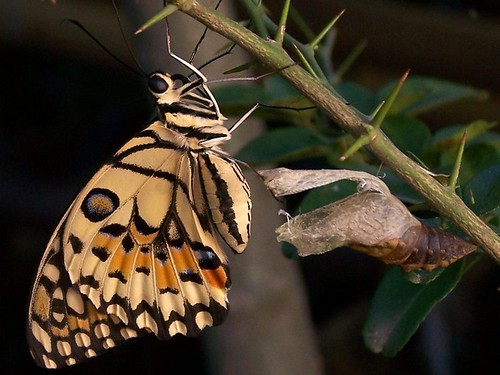Bioinformatics for me is a wonderful tool that make my research life easier~~ Just like you cannot live in today's world without internet.

Since Drosophila (fruit fly) whole genome sequence was done in 2000, more and more insect genomes have been sequenced and will be sequenced. Mass genome data sometimes make you feel lost.
I always wonder where I can find a great tool to help me dig useful information out of genome database. And local BLAST(Basic Local Alignment Search Tool) is what I need from time to time. Unlike blast using NCBI and other online interface, local blast allows you to perform blast in your local computer with your local database without the connection to internet. That is neat! So I can do blast when I am actually flying~~ I've been tried using NCBI blastall, but I was confused with many scripts. Recently, I happened to find BioEdit program can all do local blast. This program is free, easy to use, and faster than online blast. I fall in love with it immediately when I first tried it. It is really great. Now I downloaded latest Tribolium beetle's genome sequence from beetlebase and setup in BioEdit for local blast. I hope everyone should take a look at it and find out more neat functions.
Thank you Dr. Tan! Without you I will not know the exist of BioEdit and still have a miserable life.
For more detail about BioEdit program, please go to http://www.mbio.ncsu.edu/BioEdit/BioEdit.html

